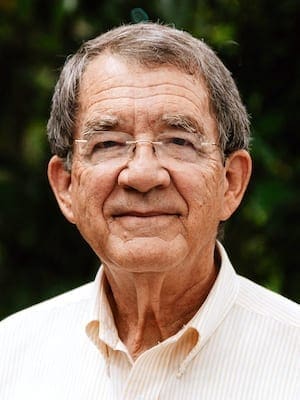Xenophobia (fear of the other) was selected as Dictionary.com’s “Word of the Year” in 2016.
I pondered then if its being called out in that way might reduce its impact on our collective life.
Alas, its effectiveness as a political tool has shown it to remain worthy of the honor.
Reflection on this feature of our common life has led to a sense of how “otherness” is central to the theology and ethics of a covenant faith.
The very idea of a covenant faith implies that an encounter and embrace of an “other” – God and neighbor – is essential to the nature of the relationship.
For theology, the covenant testimony begins with the affirmation that the “wholly other” God creates and engages creation in a partnership that will carry the divine agenda forward through history.
All of life in that created order is portrayed in an interdependence necessary for the fulfilment of that destiny.
The centuries-long evolution of that testimony through the history of the covenant pilgrimage refines that understanding of otherness to be the arena of faith – not only one’s family and tribe but also the sojourner, the stranger and nations yet to be, who are ultimately part of God’s family.
The seminal covenant promise to Abraham (Genesis 12:2-3) is this: “This is not something I am doing for you because of who you are, but something I am doing through you because of who I am.”
The ongoing surprise of God’s self-disclosure throughout the testimony is its occurrence in places where it is least expected:
- A desert theophany to a fugitive shepherd named Moses.
- An Amos who is neither a prophet nor a son of a prophet.
- A remnant of a vanquished people who found in exile the theological framework for understanding what would become the transforming power of an incarnation, with its humble nativity and modest life, its unjust cross and its experience of the mystery of resurrection.
A telling episode of the “surprise of otherness” is in Luke’s version of Jesus’ inaugural sermon in his hometown synagogue (Luke 4:16-30).
His audience is amazed at his connection of his ministry with the passage from Isaiah, but they turn on him harshly in response to his commentary that his mission would include outsiders.
They didn’t mind his claim to be an agent of the good news, but they couldn’t handle his offering it to the wrong people.
The pull toward exclusiveness has been and continues to be a challenge for faith communities.
Grace received can easily become grace protected, as the warmth and privilege of specialness draws a blanket of security around a community challenged by a diverse world.
The biblical testimony understands this and portrays it in clear relief, even in some of its earliest expressions.
But there is also a vector in the testimony that points beyond the human tendencies that would restrict and exclude, out of fear and a desire for security and domination to a vision of community that not only accepts but is also enriched by otherness.
For ethics, this theology of otherness has implications that direct decisions toward an understanding of right and wrong that are less tied to laws and doctrines and more connected to the consequences of decisions on those with whom life is shared.
The “law written on the heart” (Jeremiah 31:31-34) has more to do with community and the spirit of the law than its letter.
The needs of persons are clearer places for a focus of righteousness than rigid adherence to established rules of behavior (Mark 2:23-3:6).
Perhaps the best illustration of this point is Paul’s advice to the Corinthians to let their concern for others’ well-being be the guide for the exercise of newfound liberties with respect to traditional rules and beliefs (1 Corinthians 8:1-13).
As we approach the Advent season, with its expectations and joy over what we celebrate as the self-disclosure of God in Christ, perhaps it is good to remember that our covenant testimony points to the surprise and the challenge of such disclosure.
The warmth of the spirit and images of Christmas are wonderful to experience together. The challenge of its implications is not as easy.
If we are not careful, the Holy Family and the Christ child of our Christmas pageants can be different from the ones portrayed in the Gospels.
If we cannot see the Holy Family among those fleeing violence in Central America, then the one we celebrate this season is probably not the family described in Matthew’s story fleeing the wrath of an insecure and threatened Herod.
If we cannot see the Christ child among those displaced children or among those starving in Yemen, the one in our manger scene is probably not the child whose birth is proclaimed to shepherds in Luke’s Gospel.
A theology of otherness and its ethical implications invite us to look through their lens to see the arena of God’s ongoing covenant promise.
An embrace of sameness provides only a mirror in which we see a reflection of ourselves and leads to the idolatry of narcissism.
Professor emeritus of religious studies at Mercer University, a member of Smoke Rise Baptist Church in Stone Mountain, Georgia, and the author of Keys for Everyday Theologians (Nurturing Faith Books, 2022).


